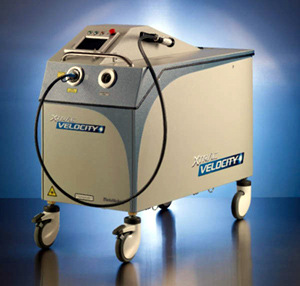Pigmentation Abnormalities
Vitiligo
Vitiligo is a chronic skin disorder causing white patches of skin to appear on the body due to loss of pigment. This happens when pigment-making cells in the skin, called melanocytes, are destroyed. The precise cause of vitiligo is complex and not fully understood. Some evidence suggests a combination of autoimmune, genetic and environmental factors are to blame. Vitiligo usually develops before a person’s 40th birthday and can also affect mucous membranes and the eye area.
Vitiligo’s course and severity differs with each person. Vitiligo is obvious year-round on darker skinned people, while fair-skinned people usually notice the contrast between vitiligo patches and suntanned skin only in the summer.
The degree of pigment loss varies within each vitiligo patch. Different shades of pigment may appear within a patch, or a border of darker skin may encircle an area of light skin. Vitiligo often begins with a rapid loss of pigment that may continue until, for unknown reasons, the process suddenly stops. Cycles of pigment loss may follow periods of inactivity and continue indefinitely.
Sometimes the best treatment for vitiligo is no treatment at all. In mild cases, makeup and other camouflaging solutions may hide vitiligo patches. Fair-skinned people can blend in patches of vitiligo with normal skin by avoiding tanning. Safe stains that dye the skin can also help match white patches to normal skin color. Self-tanning compounds, which contain a chemical that does not require melanocytes to tan skin, can also help hide white patches. These compounds won’t change the condition, but can improve its appearance.
Dermatologists traditionally prescribe topical corticosteroid cream to treat vitiligo, which can effectively return pigment to white patches. However, these creams can thin the skin in certain areas and should be used only as prescribed. Research offers hope for new treatments but a cure has not yet been found.
Xtra Excimer Laser Therapy
 UVB (ultraviolet light) is the most common form of phototherapy used to treat various skin diseases. You will be exposed to this high energy UV light for a varying length of time. This treatment is NOT A CURE, but can effectively control or improve your disease. Patients have used this treatment successfully for many years and often are able to maintain clearance of improved skin over extended periods of time.
UVB (ultraviolet light) is the most common form of phototherapy used to treat various skin diseases. You will be exposed to this high energy UV light for a varying length of time. This treatment is NOT A CURE, but can effectively control or improve your disease. Patients have used this treatment successfully for many years and often are able to maintain clearance of improved skin over extended periods of time.
The excimer laser is new form of UVB phototherapy that emits more selective light rays. The laser delivers the light rays useful for treatment and tends to eliminate those that may cause burning. Clinical studies suggest that this kind of treatment may clear psoriasis in the range of about 10+ treatments (other skin conditions may vary treatment length) but, everybody is different and do not respond the same and might need several months of treatment once or twice a week for better results.
The expected benefits of excimer laser phototherapy are:
- Improvement of existing lesions
- Reduction of new lesions (new lesions will still come up)
- Remission – In many cases phototherapy has resulted in a near total clearing of the disease process. The duration of this remission varies with each patient.
- Maintenance therapy may be required.
- Treatment of the affected areas only, healthy skin is avoided
Risk and side effects of the excimer laser phototherapy:
- The most common side effect of this therapy is UVB induce sunburn. This may occur at any time during therapy. Certain drugs may also cause you to get sunburned. Please let your doctor/nurse know of any medications that you are taking, or any that you begin while undergoing therapy.
- A blistering sunburn-type reaction can occur. If this does occur apply polysporin to the affected area and keep it cover with a Band-Aid. You can still come to your treatment areas that are blistered will be avoided until healed.
- Increased pigmentation may occur, especially after blistering sunburn-type reactions (areas being treated will get darker and fade with time after treatment is completed).
- It is possible with any form of UV light than an increased incidence of skin cancer may occur later in some patients, usually only with many UV light treatments.
- UV treatments may cause dryness, flakiness and itching. If this occurs use a moisturizing cream often as needed.
- UV treatments age the skin over time and may increase freckles and pigmentation of the skin.
- Ultraviolet rays may damage the eyes and increase your risk of cataracts. This is preventable with protective eye goggles worn during treatment, or you can keep your eyes closed.
Questions about the Photomedex treatment
1. WHO SHOULD CONSIDER THE XTRAC THERAPY?
Almost all patients with vitiligo are candidates for the XTRAC Therapy.
2. ON WHAT BODY AREAS CAN THE XTRAC THERAPY BE USED?
The XTRAC Therapy can be used on any location on the body.
3. IS THE XTRAC THERAPY SAFE TO USE ON CHILDREN?
Yes. XTRAC treatments have been performed on children as young as just a few years old.
4. IS THE XTRAC THERAPY SAFE TO USE ON PREGNANT WOMAN OR WOMEN WHO ARE NURSING?
Yes.
5. HOW QUICKLY WILL I SEE RESULTS?
Individual results will vary.
6. IS THERE ANY PAIN ASSOCIATED WITH THE XTRAC THERAPY?
No. Most patients feel no pain or discomfort during the XTRAC Therapy.
7. IS ANESTHESIA REQUIRED WITH THE THERAPY?
No. The XTRAC treatment is pain free.
8. HOW LONG DOES A TREATMENT TAKE?
Treatments are relatively quick. The exact time depends on how many psoriasis areas are being treated with the XTRAC. Typically, patients can be in and out of the treatment room in ten to fifteen minutes.
9. IS THE XTRAC THERAPY COVERED BY MY INSURANCE COMPANY?
XTRAC laser treatments for vitiligo are not covered with most insurance company.
10. HOW MUCH DOES THE THERAPY COST?
If you do not have insurance coverage, our office can discuss a cash payment plan.
11. HOW OFTEN IS THE XTRAC THERAPY GIVEN?
The XTRAC Therapy is performed two times per week. Your physician will discuss with you the best treatment program that fits your need.
12. CAN I USE OTHER TREATMENTS ALONG WITH THE XTRAC THERAPY, SUCH AS TOPICALS?
Yes, our providers will go over the best treatment plan on your initial visit.
Light Box Therapy
 Phototherapy is a treatment that involves the exposure of the skin to Ultraviolet light. The physician who is treating determines this. Supervised by a physician, ultraviolet light B (UVB) narrow band is standard treatment for moderate-to-sever psoriasis. Its actions are to slow down the reproduction of skin cells. In controlled doses, UVB can be used to treat many skin disorders.
Phototherapy is a treatment that involves the exposure of the skin to Ultraviolet light. The physician who is treating determines this. Supervised by a physician, ultraviolet light B (UVB) narrow band is standard treatment for moderate-to-sever psoriasis. Its actions are to slow down the reproduction of skin cells. In controlled doses, UVB can be used to treat many skin disorders.
Melasma
Melasma occurs when estrogen and/or progesterone stimulate pigmentation hormones to produce irregular-sized dark brown or grey patches on both sides of an adult’s face. These patches typically appear on the cheeks, bridge of the nose, forehead or upper lip, and occur most frequently in darker skinned women, although it is has also affected lighter skinned men and women.
Individuals with a family history of melasma are more likely to develop the condition, but its precise cause is unknown and a cure has not been found. Changes in hormonal status, such as pregnancy, may trigger melasma. Birth control pills and sun exposure are also known to activate melasma.
Sunscreen with an SPF of 30 or higher is one treatment for melasma because it protects against the sun’s UVA and UVB rays, which can trigger melasma during even limited outdoor activities such as walking down the street, driving a car or sitting next to a window.
Bleaching creams also work well. These creams don’t bleach the skin, but rather decrease pigmentation production. Over-the-counter creams contain low concentrations of hydroquinone, the most commonly used de-pigmenting agent. At Raleigh Dermatology, we may prescribe creams with higher concentrations of hydroquinone for melasma when appropriate, and it usually takes about three months to substantially improve the condition.
Melasma management requires a comprehensive and professional approach. Raleigh Dermatology partners with melasma patients to provide close supervision for a successful outcome.
Please contact us at 919-876-3656 to learn more about Pigmentation Abnormalities or to schedule an appointment.



